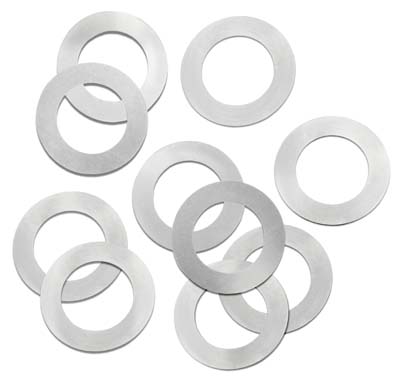Stainless Steel Arbor Shims
Stainless Steel Arbor Shims
Precision Brand Products Inc. is introducing Stainless Steel Arbor Shims as an expansion of the current Steel Arbor Shim product line.

Precision Brand Products Inc. is introducing Stainless Steel Arbor Shims as an expansion of the current Steel Arbor Shim product line. The new Stainless Steel Arbor Shims are available in 18 thicknesses in 12 different I.D/O.D. combinations.
Stainless Steel Arbor Shims are corrosion resistant and can be used for fast, accurate spacing of milling cutters, gang cutters, saws, slitting blades and grinding tools. Special sizes, materials, spacers with keyway, and bulk quantities are available upon request.
The new Stainless Steel Arbor Shims are packaged in air tight ploy bags, 10 pieces per bag, unless otherwise indicated.
Tolerances: I.D. + .011"/-.000"O.D. +/-.002".





